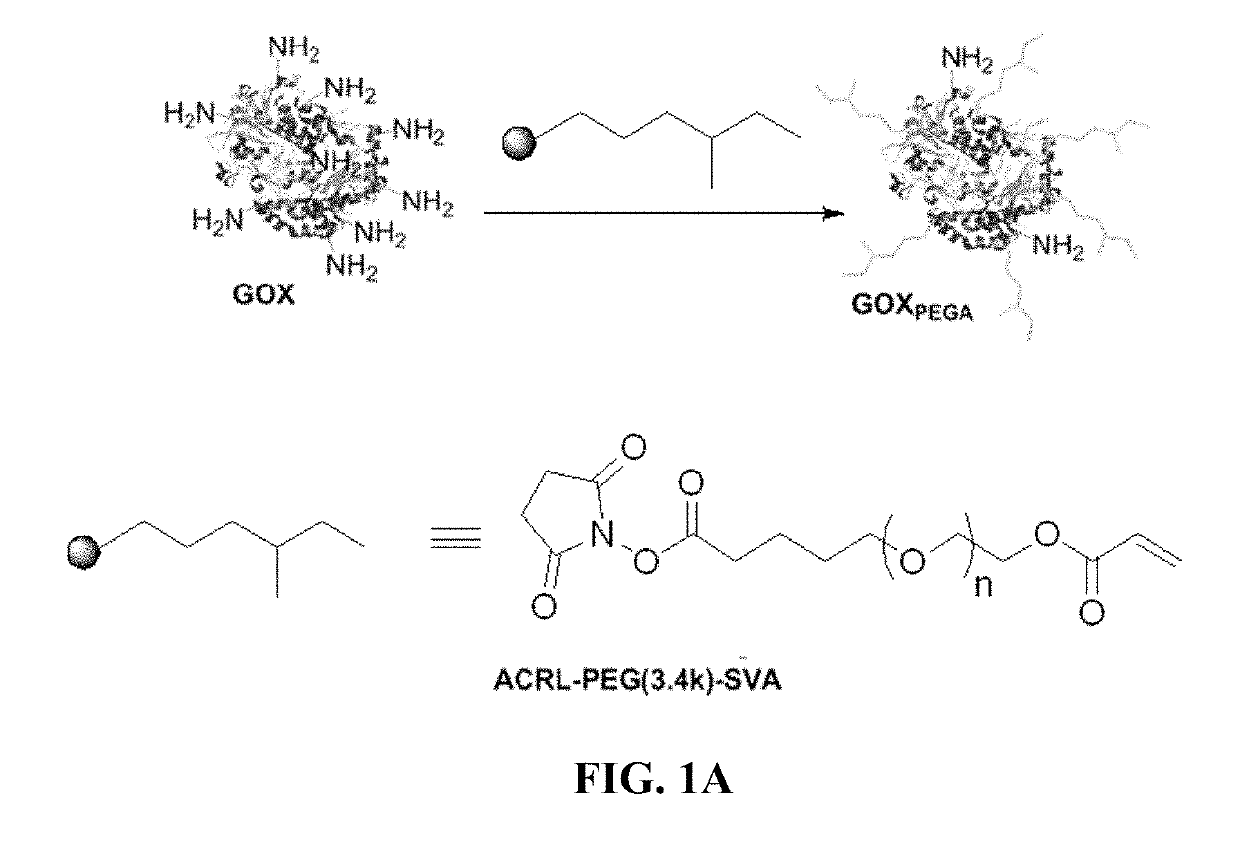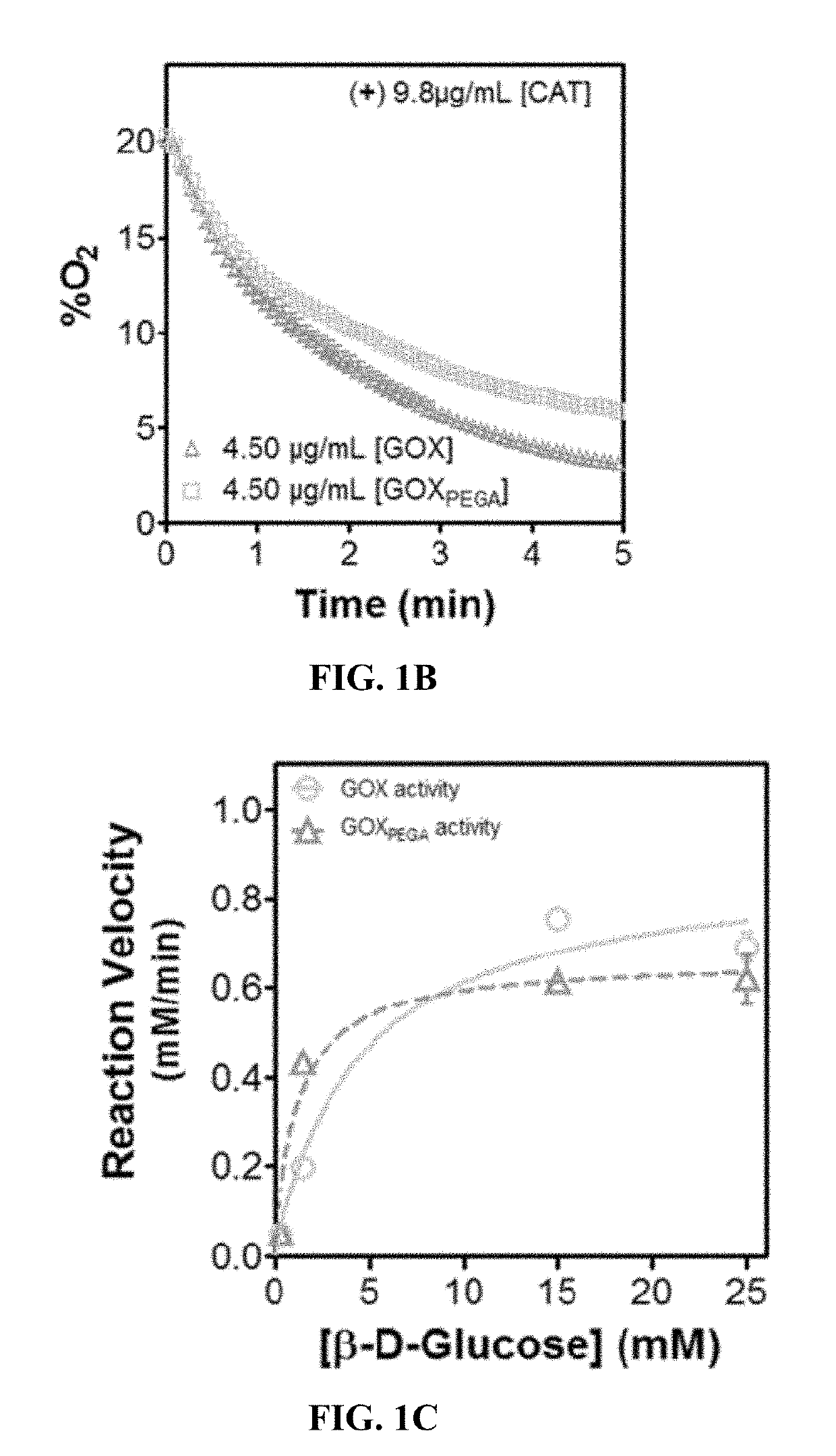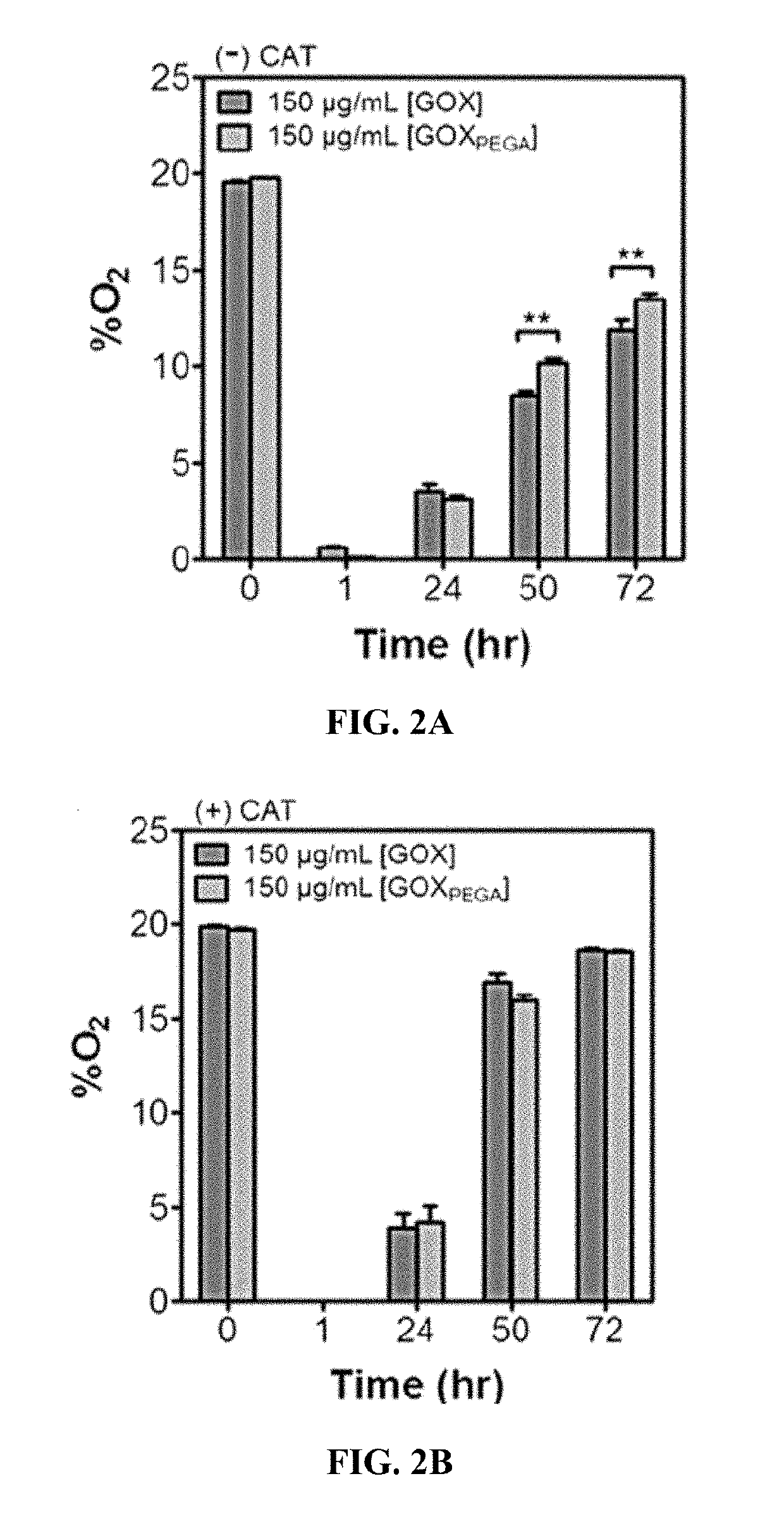Stabilization of enzyme-immobilized hydrogels for extended hypoxic cell culture
a technology of enzyme-immobilized hydrogels and cell culture media, which is applied in the direction of enzymology, instrumentation, apparatus sterilization, etc., can solve the problems of affecting the expression of certain hypoxia-related genes, rapid diffusion of air to cell culture media, and affecting the effect of h2o2 accumulation
- Summary
- Abstract
- Description
- Claims
- Application Information
AI Technical Summary
Benefits of technology
Problems solved by technology
Method used
Image
Examples
example 1
Macromer Synthesis and Characterization
[0076]PEG-diacrylate (PEGDA) is synthesized according to an established protocol and characterized with 1H NMR (Bruker 500). The degree of PEGDA functionalization is around 89% (FIG. S1). Photoinitiator lithium aryl phosphonate (LAP) is synthesized as described elsewhere. To facilitate enzyme immobilization within hydrogels, glucose oxidase is acrylated using Acryl-PEG-SVA using the method according to Choi et al. Briefly, the enzyme is first dissolved at 20 mg / mL in PBS supplemented with 2 mM EDTA (pH 8.5) and 50 mM sodium carbonate. Acryl-PEG-SVA is added in 200× molar excess to enzyme concentration and the reaction proceeds at room temperature for 2 hours with stirring. During the reaction, primary amines on the surface of the enzyme react with SVA groups to afford PEG-acrylate (PEGA)-modified GOX (GOXPEGA). Unreacted macromers are removed using size exclusion chromatography columns (Zeba Spin Desalting column). Un-modified GOX at the same c...
example 2
Characterization of Enzymatic Activity of GOXPEGA
[0077]To examine the enzyme activity, O2 consumption in the presence of the enzyme and glucose is quantified. The changes in O2 content over time in the presence of GOX or GOXPEGA (Vo=Δ [O2] / ΔTime) is defined as the reaction velocity. The enzyme is dissolved PBS (pH 7.4) at 0.13 μM in a 2 mL microtube with constant stirring at 25° C. The O2 consumption reactions are carried out under ambient air with constant O2 diffusion from the air to mimic actual cell culture conditions. Stock β-D-glucose solution is injected at the start of every measurement to give starting concentrations of 0.30-25 mM [S]I. Dissolved O2 concentration is monitored for 3 minutes using an O2 probe and meter (Microx4, PreSens; see Example 6). O2 contents are plotted as a function of time and the initial linear portion of the curve was used for Vo calculation (change in substrate concentration over time). Non-linear regression analysis and curve fitting is applied ...
example 3
Synthesis and Characterization of Enzyme-Immobilized Hydrogels
[0078]All macromer solutions are sterilized by passing through 0.22 μm syringe filters. PEGDA hydrogels (15 wt %) are polymerized aseptically through radical mediated photopolymerization in the absence or presence of GOXPEGA monomer (6 mg / mL), and LAP (1 mM) as the photoinitiator. 60 μL gels are injected between two glass slides separated by Teflon spacers (2 mm) and gelation is initiated with a UV lamp (365 nm, 5 mW / cm2, 2 minutes exposure). Following photopolymerization, hydrogels (˜3.1 mm dia.×2 mm thickness) are incubated in DPBS for 24 hours at 37° C.
PUM
| Property | Measurement | Unit |
|---|---|---|
| pH | aaaaa | aaaaa |
| total volume | aaaaa | aaaaa |
| dissociation constant | aaaaa | aaaaa |
Abstract
Description
Claims
Application Information
 Login to View More
Login to View More - R&D
- Intellectual Property
- Life Sciences
- Materials
- Tech Scout
- Unparalleled Data Quality
- Higher Quality Content
- 60% Fewer Hallucinations
Browse by: Latest US Patents, China's latest patents, Technical Efficacy Thesaurus, Application Domain, Technology Topic, Popular Technical Reports.
© 2025 PatSnap. All rights reserved.Legal|Privacy policy|Modern Slavery Act Transparency Statement|Sitemap|About US| Contact US: help@patsnap.com



